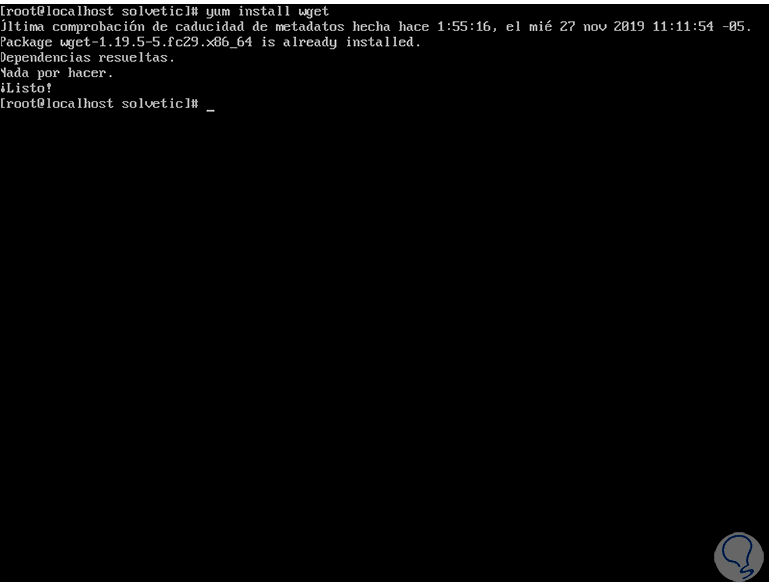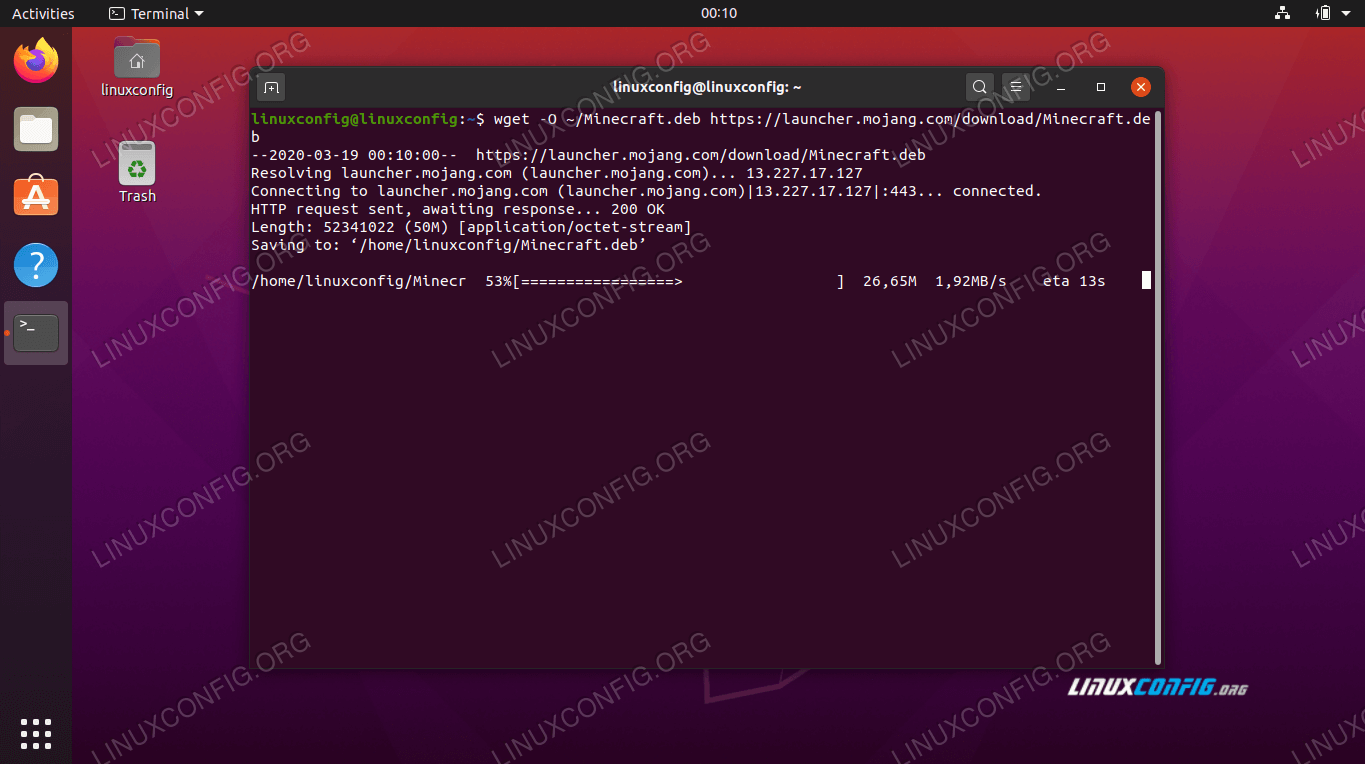

- #Wget ubuntu how to#
- #Wget ubuntu pdf#
- #Wget ubuntu install#
- #Wget ubuntu full#
- #Wget ubuntu download#
The recursive option also can be used with the FTP protocol to download FTP files recursively. wget -ftp-user=username -ftp-password=pass Īs per the above example, wget command will download 'file1.txt' from the FTP Server located at 192.168.1.10. We can use wget command to download files from a FTP Server. Note that recursive retrieving will be limited to the maximum depth level, default is 5.
#Wget ubuntu pdf#
For example, if you need to download pdf files from a website. This is done with the Recursive Download. The -A option allows us to tell the wget command to download specific file types.

wget -mirror -convert-links Download Specific File Types
#Wget ubuntu full#
Mirroring is similar to Recursive Download but there is no maximum depth level, So it will download the full website. Note that quota will never affect downloading a single file. The value can be specified in bytes (default), kilobytes (with k suffix), or megabytes (with m suffix). The download process will be aborted when the limit is exceeded. We can set the max download size when retrieving files recursively. wget -r l 2 -convert-links Set max download size

The -convert-links is a useful option, it convert links to make them suitable for local viewing. Note that, '-l 0' is Infinite recursion, So if you set maximum depth to zero, it will download all the files on the website. The wget recursive mode crawl through the website and follow all links up to maximum depth level. But we can Specify recursion maximum depth level using the -l option. The default maximum depth of the recursive download is 5. The -r or -recursive option use to Turn on recursive retrieving. The above wget command will save verbose output to the 'log.txt' file. The -o (lowercase 0) option will log all messages to a logfile. wget -S Save verbose output to a log fileīy default wget command prints verbose output to the Linux terminal. The -S or -server-response option will print the response headers. Sometimes you will want to see the headers sent by the Server. wget -user-agent='Mozilla/4.0' View Server Response Headers The following example will retrieve and use 'Mozilla/4.0' as wget User-Agent. The -user-agent change the default user agent. wget URL1 URL2 Set User Agent in wget command The wget command can download multiple files or webpages at once. wget -O Download Multiple files and pages With -O (uppercase o) option we can specify different output file name.įollowing wget command will download file and save it as. Save with different filenameīy default wget command will save the download file same name as the remote file. The file will be saved with the same name as remote filename. Since we only used the url, not a specific file name, output will be saved as "index.html".įollowing command will download the '' file from the website. To download a web page or file, simply use the wget command followed by the URL of the web page or file.
#Wget ubuntu install#
To install Wget on Red Hat/CentOS and Fedora use the following command: yum install wget Download Web pages with wget commandĬapturing a single web page with wget is straightforward.

To install Wget on Debian and Ubuntu-based Linux systems, run the following command. Continue incomplete download with wget command.
#Wget ubuntu how to#
In this tutorial we will see how to use wget command with examples. The wget command in Linux support HTTP, HTTPS as well as FTP protocol. The wget is a Linux command line tool for download web pages and files from the internet. Ninja will automatically detect number of available processor cores and does not need -j option.Linux wget Command Examples, Tips and Tricks Make can run multiple compilation processes in parallel, -j option means "run jobs simultaneously". Changes in the configuration like disabling a dependency, modifying build scripts or switching sources to another branch are not handled very well and can result in broken workspace. If you experience problems with the build process, try to clean or recreate the build directory. Refer to the OpenCV installation overview and OpenCV configuration options reference tutorials for details and full configuration options reference. Note Configure process can download some files from the internet to satisfy library dependencies, connection failures can cause some of modules or functionalities to be turned off or behave differently.


 0 kommentar(er)
0 kommentar(er)
